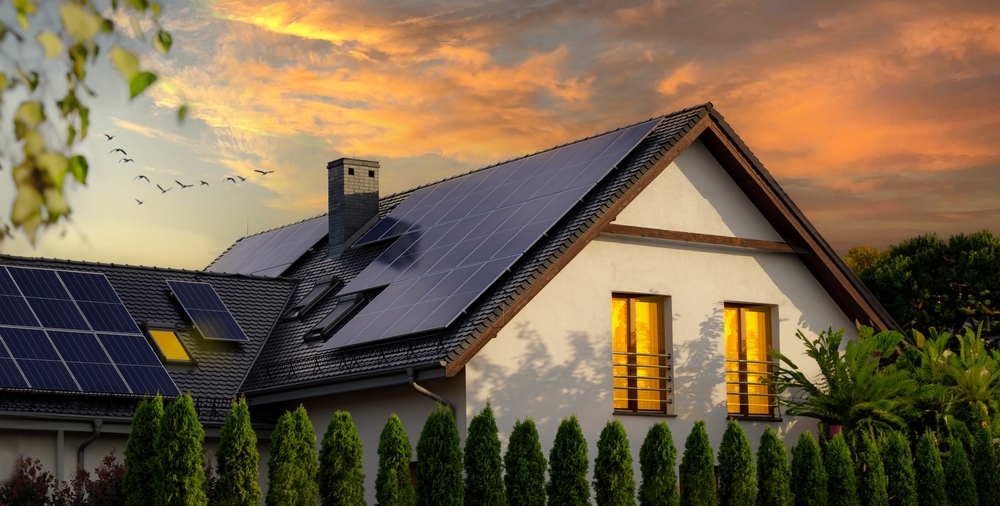
Household investment in energy is on the rise as consumers install more distributed energy resources in their homes, according to the International Energy Agency (IEA). This is one of several good economic signals for distributed energy we’ve picked up in recent reports.
The IEA report, “Who is investing in energy around the world, and who is financing it?” finds that household share of energy investment has doubled since 2015 — largely due to those with higher incomes adopting rooftop solar, energy efficiency improvements, heat pumps, and electric vehicles.
That’s pushed household investment up to 18%, with governments and private enterprises making up the rest.
At 11% North America has some catching up to do compared to other advanced economies, such as Japan and Korea (29%) and Europe (27%).
US performance may improve as government money flows into distributed energy from the Investment and Jobs Act (IIJA) and the Inflation Reduction Act (IRA). A separate peer-reviewed report from the IEA evaluating US energy goals finds that the two laws are making the US a major market for renewables, batteries and electric vehicles and significantly boosting energy efficiency.
Local solar tops big solar in NY
New York, in particular, stands out as a model. Distributed solar deployment is now outpacing utility-scale renewables, averaging 31% annual growth over the last decade. This growth has created 5.7 GW of distributed solar, including nearly 1 GW in 2023 alone, according to a report by the New York Solar Energy Industries Association.
Much of the growth is driven by community solar, an option for apartment dwellers and others who cannot install rooftop solar.
“While utility-scale renewables have struggled under the pressure of economic and supply chain challenges in recent years, New York’s distributed solar industry has proven it is nimble and can successfully deploy projects at scale despite facing similar headwinds,” NYSEIA wrote. “Conventional wisdom is that utility-scale solar can be deployed faster and cheaper than rooftop and community solar, however, New York has flipped that logic on its head; 93% of New York’s installed solar capacity is rooftop and community solar.”
The state is ahead of schedule in its goal of 10 GW of rooftop and community solar by 2030. As a result, the organization is calling on state lawmakers to raise the state’s distributed solar goal to 20 GW by 2035. NYSEIA says the additional 10 GW will save:
- $50 billion in gross utility bill savings for New York households and businesses
- $3.6 billion in direct financial benefit to host communities, including $1.8 billion in revenue to rural landowners and $1.8B in tax revenue to local governments and school districts.
To reach 20 GW of distributed solar by 2035, the state will need to sustain just 7-10% annual growth in deployment.
Solar panels are a good investment: study
Energy burden — the percentage of household income that goes toward paying energy bills — offers another metric to gauge the economic effectiveness of DERs. Does household energy burden rise or fall when all costs and benefits of DERs are considered?
The Lawrence Berkeley National Laboratory evaluated 500,000 households to determine how rooftop solar affects energy burden. The researchers found that solar panels can generate a median savings of $691 a year when considering all of their costs, including those for leases and loans. As a result, most of the households, including low — and moderate-income households — saw their energy burden fall.
For most of the group, energy burden fell from a median of 3.3% to 2.6%. For low-income households, the number fell from 7.7% to 6.2%. Importantly, solar reduced the rate of high or severe energy burden from 67% to 52% for all low-income households.
As Berkeley Lab notes, the findings are important because state and federal governments have set energy equity goals for marginal communities, which have taken the brunt of environmental harm from fossil fuels. The Biden administration, for example, requires that disadvantaged communities receive 40% of the overall benefits of certain federal climate and clean energy investments as part of its Justice40 initiative.
EV investment surges for low-income communities
Electric vehicles (EVs) appear to be an area where the federal government’s equity attempts are succeeding.
The Center for American Progress (CAP) analyzed 100 congressional districts and found that lower-income communities receive a large share of federal money for batteries and EV charging.
About three-quarters of US EV battery and charger investment has occurred in communities with median household incomes below the national median of $74,755. Districts with a poverty rate above the national rate accounted for 65% of the investments.
Republican-leaning Congressional districts benefited the most when it comes to battery incentives, with 71% receiving funding. Investment in EV chargers is evenly split between Republican- and Democratic-represented districts, says CAP.
“Not only are these technology and battery investments happening in underserved areas, but they can also provide a pathway to higher-paying — and often unionized — jobs,” says the paper.
Of course, all of this good news doesn’t mean that the job is done. Distributed energy remains a minuscule part of our energy system and faces pushback from the old guard that prioritizes large capital infrastructure investments. Join us to change that. Contact Veronica@energychangemakers.com to learn more about the Energy Changemakers community.
